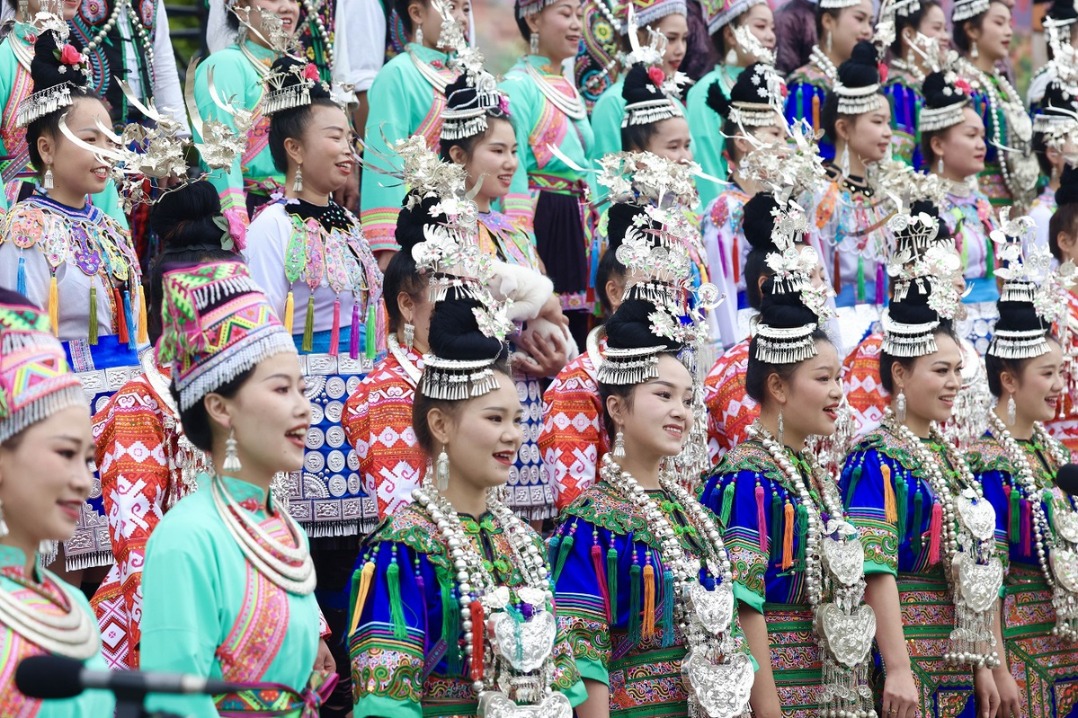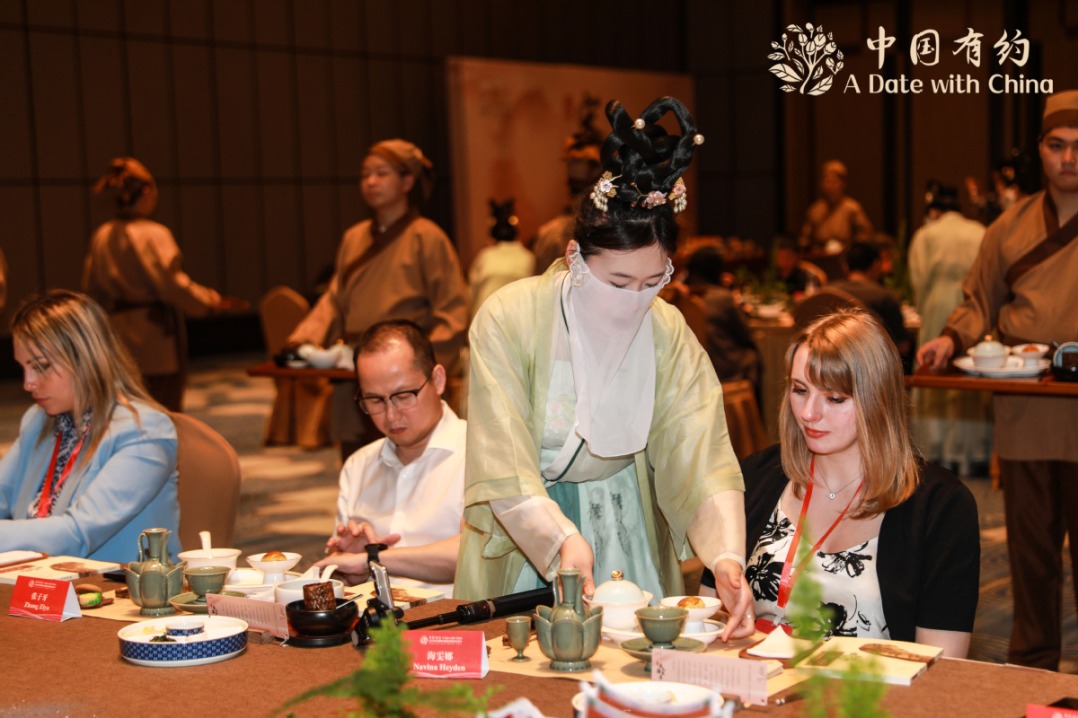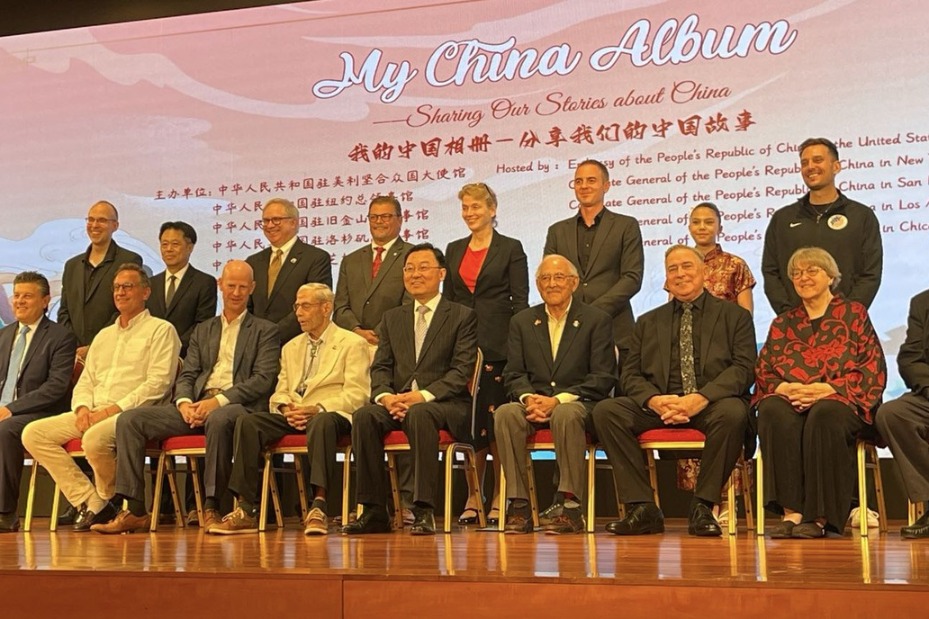Allergy patients welcome effort to pull out plant
By XIN WEN | CHINA DAILY | Updated: 2021-11-19 09:17
He Yanbing seems strong and tough, talks with a northwestern China accent, and is a big fan of outdoor sports.
But the 50-year-old from Yulin, Shaanxi province, has a sensitive nose. Since 1992, whenever He gets close to certain kinds of plants, he sneezes a lot and has a bad case of runny nose.
During the flowering season from July to September, his symptoms become more serious. His skin turns red and swollen, and becomes itchy. Sometimes he develops asthma attacks, preventing him from getting sleep.
A designer and father of three, He tries his best to keep a daily routine. He exercises regularly, takes his medicine twice a day and sees his doctor every month.
However, the routine He has painstakingly built for himself faces the risk of breaking at any time.
In Yulin, about 400,000 to 500,000 people out of a population of 3.6 million suffer from allergic rhinitis, according to He, who established a public welfare alliance in 2013 to offer help to patients in Northwest China who have the condition.
"Patients' allergic reaction resembles the common cold," said Yin Jia, director of the allergy department at Peking Union Medical College Hospital in Beijing. "They sneeze and shed tears. Every year we treat dozens of patients from Yulin."
In the early 1960s, the allergy department proved that artemisia pollen is the most important allergic pollen in North China.
After the country launched the Three-North Shelter Forest Program in 1978 to preserve the environment, the hardy shrub artemisia was widely planted. It is one of few plants able to survive in the deserts in the region.
Starting in October 2003, a medical team from Peking Union Medical College Hospital conducted three years of field research in Shenmu county, the largest county-level region in Yulin, and confirmed that the most abundant airborne pollen in the area was artemisia, accounting for 78 percent. Its pollination period lasts from July to September each year.
A paper by Yin published in the National Medical Journal of China in June 2006 that was based on her clinical study also revealed that almost half of the patients with allergic rhinitis in North China develop seasonal allergic asthma within nine years. She also revealed that pollen from artemisia and Japanese hop can be severe and induce asthma during autumn.
He, the allergic rhinitis sufferer from Yulin, has been fighting artemisia since discovering that his disease is not curable.
He has sought medical advice about treatment. A member of the local political advisory body, for the past five years he has called on the city government to stop planting artemisia.
Yin said the cause of allergic rhinitis is related to genetically susceptible genes. While allergic diseases cannot all be cured, she said some can be effectively contained.
"Many different kinds of medicines can control the disease and alleviate the symptoms, as well as those new kinds of biological agents," she said.
"But none of the drugs can slow the progression of allergic diseases except for immune desensitization treatment that's been proved by the World Health Organization."
She said the principle of the treatment is to inject multiple doses of a small amount of the allergen. If the body can tolerate small amounts each time, patients won't suffer as severely when a bigger dose of the allergen is received.
On Sept 24 last year, in a reply to He's proposal to the Yulin government, the city's health commission said the city will plant alternative species instead of artemisia.
"In the desert area, arbor species such as mongolica pine will be planted after artemisia plants are scheduled to be removed gradually," it said.
Four monitoring stations for air pollen concentration in Yulin are set to begin monitoring work when the pollen season arrives, it added.
Statistics from the Shaanxi Provincial Forestry Bureau show that sand control in Yulin had achieved 93 percent coverage by April last year, meaning that the Mu Us Desert-one of the four largest deserts in China, which covers 24,400 of Yulin's 42,920 square kilometers-is going to become an oasis.
"Our environment has indeed changed, boasting a beautiful landscape," He said, acknowledging the effectiveness of immune desensitization treatment.
"The times are changing, and what we achieved in the past may have side effects in the present," He said.
"We need to continuously progress with it to improve our way of life in all respects."
























